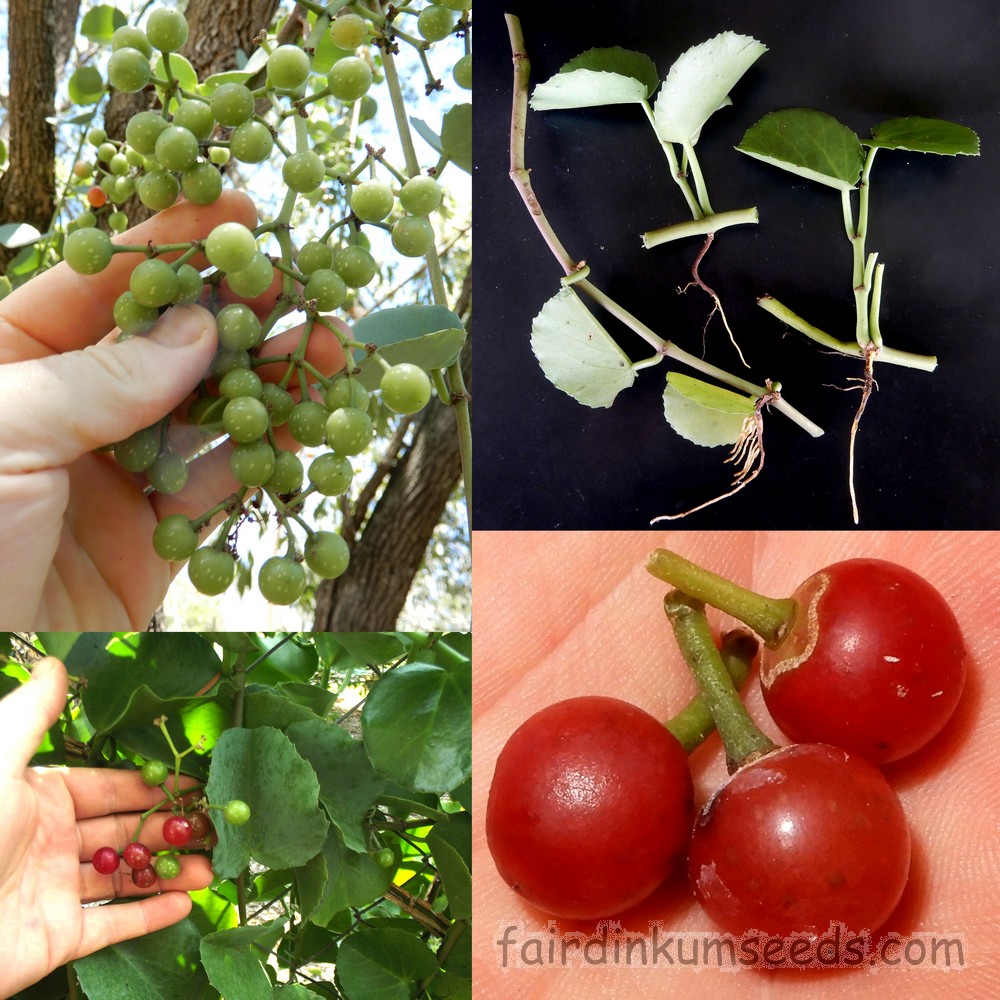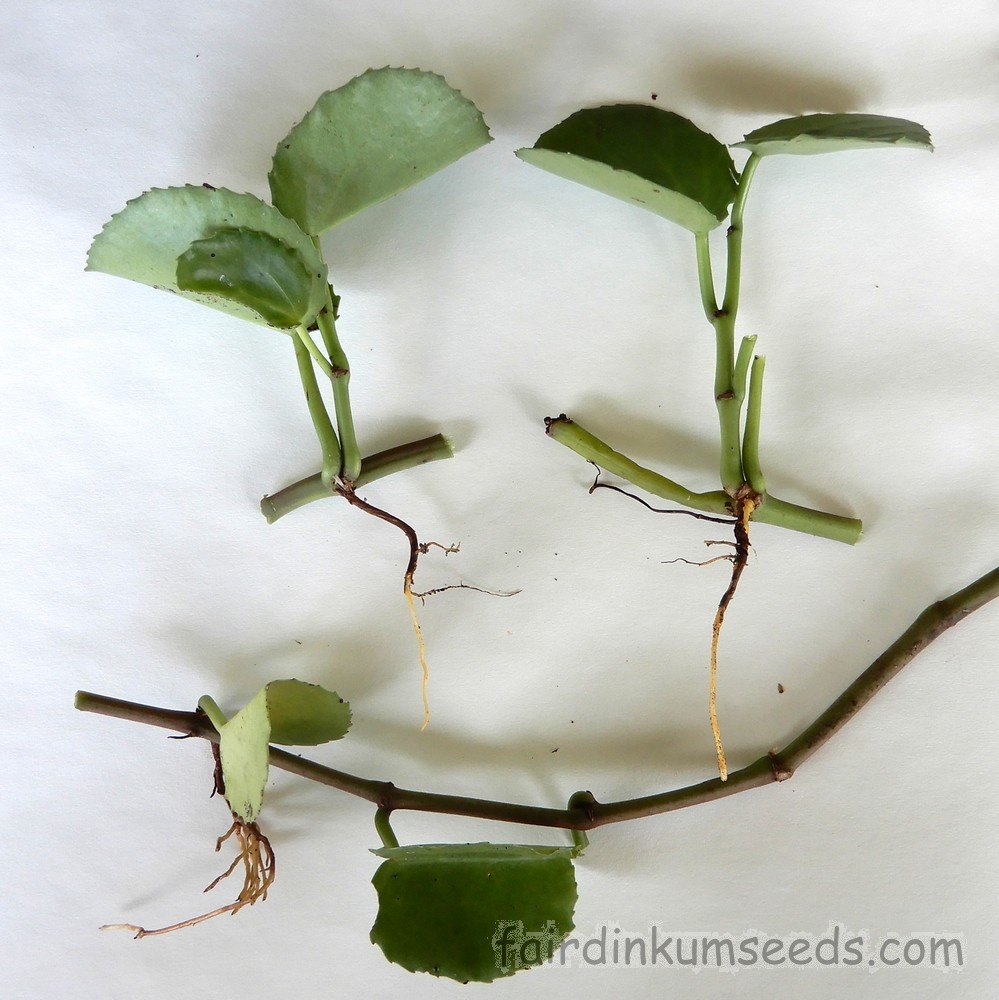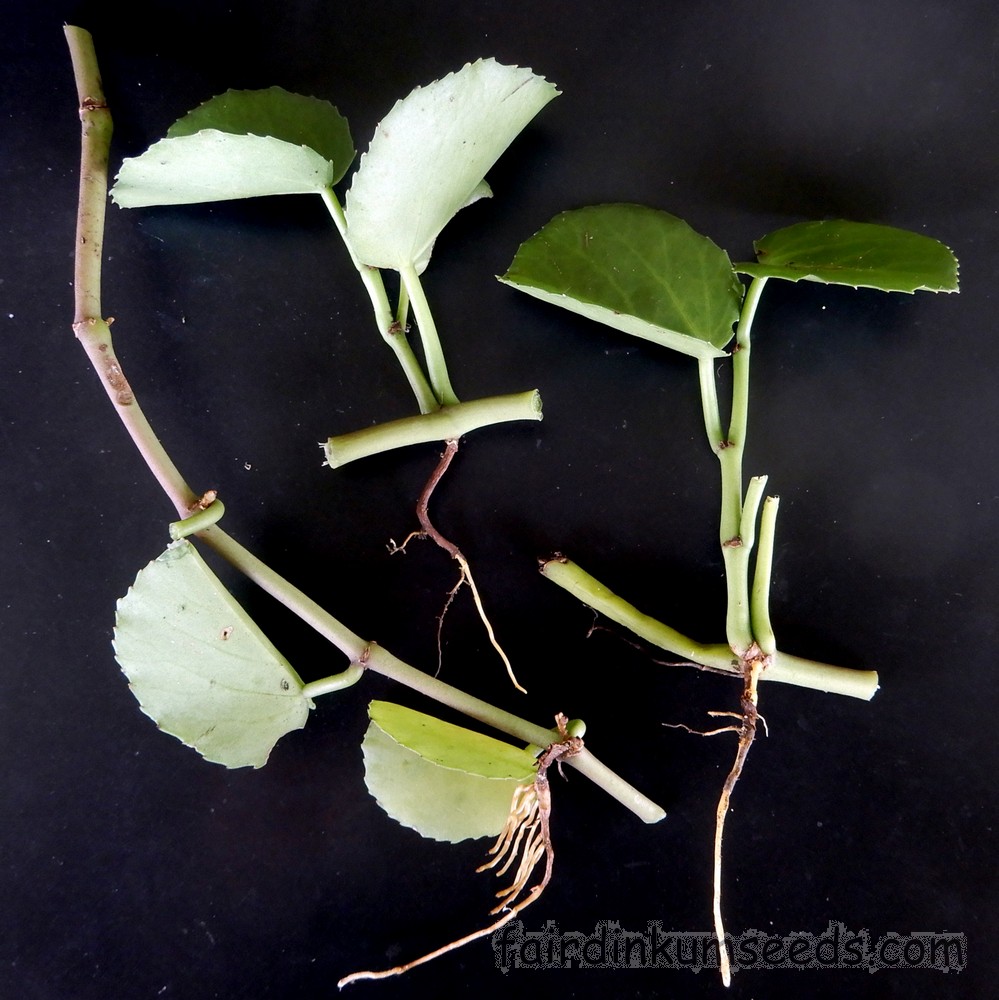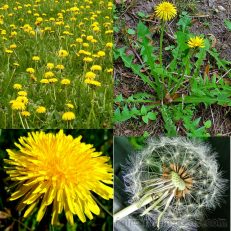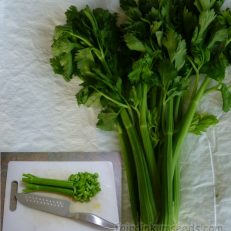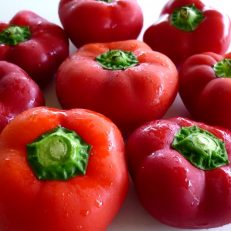Please read text!
Peruvian Round Leaf Grape Cissus Rotundifolia Cuttings
Packet containing 3x freshly harvested rooted cuttings!
It grows super easy from well rooted cuttings like these and all you need to do is unwrap the paper and put the rooted section in a sandy well draining soil mix, then water a couple times a week until they recover from any transit stress.
After that they are pretty bullet proof in my experience and in warm climates you’ll have a thick mass of roots and new shoots pumping away within a month or two.
This beautiful bright red grape is known by a heap of names including Arabian round leaf vine, Arabian wax cissus, Arabian wax leaf, Arabian wax leaf vine, bushveld grape, Cissus rotundifolia var ferrugineopubescens, Cissus rotundifolius, Cissus ferrugineopubescens, grape cissus, grape leaf cissus, Peruvian grape ivy, Grape ivy, Round leaf ivy, Peruvian wax cissus, roundleaf grape ivy, Saelanthus rotundifolius, succulent grape, Venezuelan treebine, Vitis crassifolia, Vitis forskahlii, Vitis rotundifolia, Peruvian grape ivy, umjovane, lheveialhovo, pangalatane, wax leaf, Cissus crassifolia, Vitis crassifolia, and Cissus rotundifolia is the currently accepted one.
As the names suggest its a very hardy grape, and a very nutritious one at that.
With most grapes its the fruit that makes it cool and while this one is very edible it has a large seed and a very thick rubbery skin that should be discarded after popping the fruit out into your mouth. The taste is fine, mildly sweet and quite nice but subtle, and it lacks the juicy sweetness of the much more common supermarket alternatives.
Like a lot of wild grapes it also sometimes has a mild peppery prickly flavour that lingers at the end. Way less than most, not all the time, and not offensive, but not particularly more-ish either.
Dried candied or used in hooch it doesn’t have the same effect in my experience.
All that said this fella is best used as a hardy leaf crop not as a table fruit.
It is super drought tolerant and I never bother to water my established plants, at all. If you do the growth is awesome and once established a small clump can pump out big arm loads of leaf matter every couple months.
The chooks and ducks smash it and its a really economical way to supplement their food and lower your costs once they work out its a food.
The leaf and tuberous roots are traditionally slow cooked into soups stews and curries but I like to dry the leaves threaded on strings and hang in the cupboard as a back up vegetable for when I can’t be bothered going outside or it’s raining. By drying and then later cooking it helps to break down a lot of the oxalic acid just like I do with Taro root leaves.
When dried it has about ~13% protein, ~8% fat the majority of it unsaturated, 8% fibre and the rest is made up of carbohydrates vitamins minerals and trace elements.
Despite the wide range of location based common names it is originally from Eastern Africa and this is no doubt why it is such a hardy and productive species. I reckon it is another one that prepper and self sufficiency folks should strongly consider growing. China now has some massive plantings of it and it’s now being used as a filler and thickener in a whole range of processed foods both there and all around the world.
The natural beauty of this climbing plant means most folks wouldn’t ever consider it could also be a staple food crop, which to my eye is another big advantage.
This advert is for 3x freshly harvest cuttings with roots, but I also sell the Freshly Harvested Seeds at this link too. If you do not live in Australia I recommend buy seeds instead of these three well rooted plant cuttings as the odds of arrival are much higher, but at the end of the day it’s all up to you. If you pay me I’m happy to post them.
Because the vine grows 10-30meters you will never have a shortage of cuttings once you get it established.
I’m told it handles mild frost ok but full sun in a warm climate is where it performs the best by far.
Home grown by me and the Mrs, no chems, no nasties, no problems!!!
